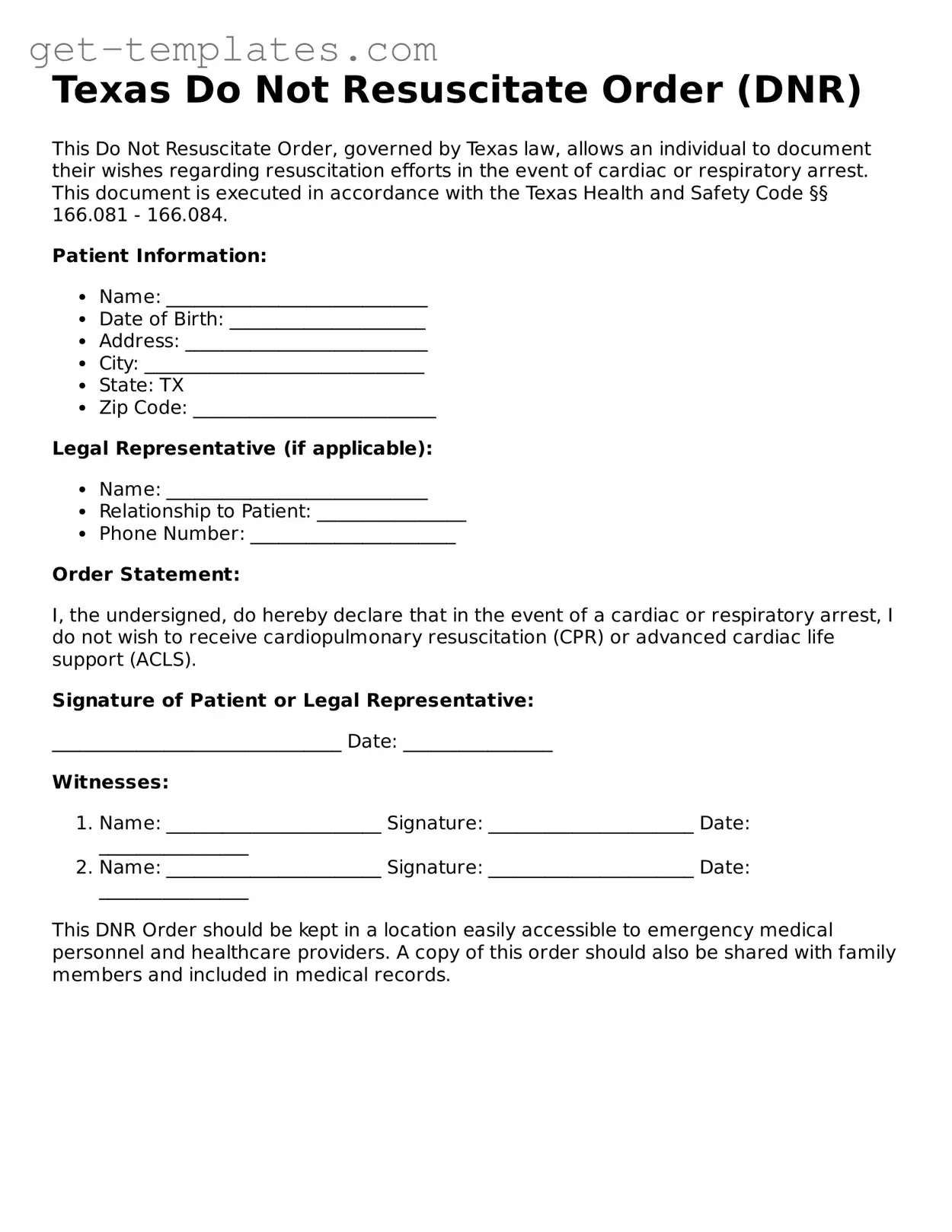Texas Do Not Resuscitate Order (DNR)
This Do Not Resuscitate Order, governed by Texas law, allows an individual to document their wishes regarding resuscitation efforts in the event of cardiac or respiratory arrest. This document is executed in accordance with the Texas Health and Safety Code §§ 166.081 - 166.084.
Patient Information:
- Name: ____________________________
- Date of Birth: _____________________
- Address: __________________________
- City: ______________________________
- State: TX
- Zip Code: __________________________
Legal Representative (if applicable):
- Name: ____________________________
- Relationship to Patient: ________________
- Phone Number: ______________________
Order Statement:
I, the undersigned, do hereby declare that in the event of a cardiac or respiratory arrest, I do not wish to receive cardiopulmonary resuscitation (CPR) or advanced cardiac life support (ACLS).
Signature of Patient or Legal Representative:
_______________________________ Date: ________________
Witnesses:
- Name: _______________________ Signature: ______________________ Date: ________________
- Name: _______________________ Signature: ______________________ Date: ________________
This DNR Order should be kept in a location easily accessible to emergency medical personnel and healthcare providers. A copy of this order should also be shared with family members and included in medical records.
